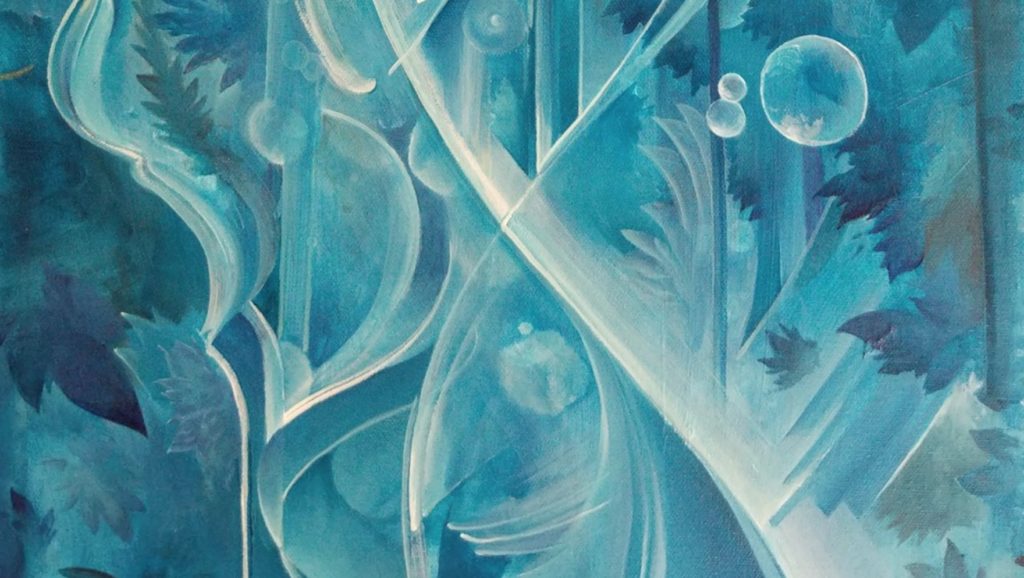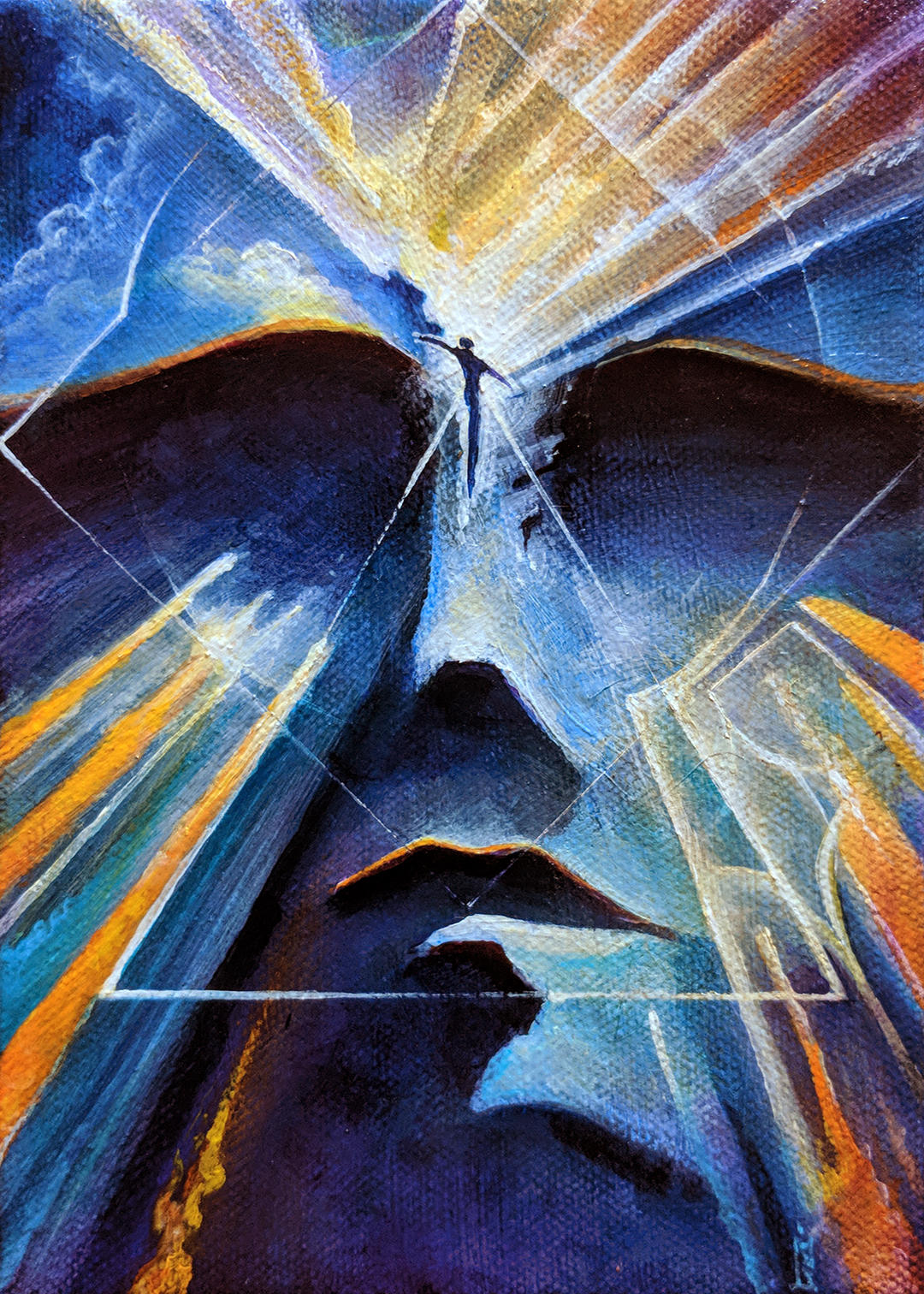You’ve Got to Carry That Weight (or that flame) a Long Time

"Sometimes when I don't post enough progress shots, people begin to say I've lost it-- Maura is washed up. This is never the case. I work diligently, every day, motherf***ers."
Maura Holden
Some time back, I came to a pivot point in my work and my understanding of the well from which I draw my inspiration.
This One Trick Will Make You a Successful Artist

The trick - the secret - to being a successful artist is that - and I'm going to tell you right in the beginning and not make you wade through pages of text and links - and that's good because no one has time for that because the secret of artists everywhere of all kinds and shapes and sizes is that, first and foremost, you have to MAKE art.
And keep making art.
Painting the Feeling

When you decide to be a painter - and I mean the painterly sort who is rendering shapes and objects and emotions - I think it's important to always remember that you aren't merely painting a representation of the thing, you are painting THE thing. It's not a cloud. It's all your feelings and ideas and archetypes of clouds. It's not a leaf, it's how the leaf feels and where it resides in your world. A successful painting has not only the subjects arranged and objects properly rendered according to your style and taste, but most importantly it captures the feeling, the sensation those objects and subjects are intended to evoke. For me, it always comes back to 'but how does it FEEL?' and I work outwards from there. I think the second mark of success of an artwork is that others can feel it too, without words or explanation. Then I feel we've really accomplished something.
The Tyranny of the Real

When, as an artist, you choose to include 'the real' in your work - and I mean actual real objects or even just corners and elements thereof - you know, things like faces or noses or hands or leaves or cornices - you've stepped into the territory of 'having something to say' because now we are creating relationships. No object exists within a vacuum. All things have some meaning.
And don't try to throw out meaning. The Surrealists already did that. They threw out meaning in an effort to foster the random associative quality of the subconscious mind. Cool. Cool. We'd never done that before - as a culture. But now we have broader understandings of scopes of our creative selves. We're playing with more than just the subconscious. We're exploring the subconscious, the id, and the superego all together.
Authenticity

The word 'authentic' gets used a lot these days. You know, like 'getting in touch with your authentic self' and what not. I don't know what that all means to be honest but when I paint what I want to make is the most authentic feeling in the moment. I want to express the sensations, the movements, the moments. What's going on for me in that time and space. It might be high or low or, as is most often - and as is with most of us - bobbing along in the between.
So what is the authentic self? Just that present moment day to day laundry list of sensations. Now it is like this. Tomorrow it is like that. And so on. Yet the I who feels it - the I that is the culmination of all of those sensations - the I remains. Until, perhaps, in a flash, a moment, it doesn't. And in those moments of clarity, of light piercing the veil, we see a little further.
Find What You Love (And Paint That)

A number of years ago I was in a bookstore browsing art books as usual. In one book talking about the 'business of art'. In the book, the author wrote that if you find something you like to paint and you also find it sells, then you ought to paint more of that thing. For instance, the author said, if you paint cats and people like and buy those paintings of cats and buy those cat paintings, then paint more cats! And more cats! (This was the late-90s, by the way, and the internet had yet to be taken over by felines.) At the time, I thought that sounded a whole lot like selling out. Why would I want to paint the same thing over and over and over again? BOOOOORING.
I remember once I even tried to make a few 'similar' paintings because an idea had proven popular. My interest fizzled almost immediately though due to the fact that the subsequent images had no heart. They weren't birthed from an inner drive or a need to create something or reflective of some sort of personal process or vision. They were just… boring.
What It Looked Like From Here: Tiananmen Square, June 5, 1989

In 1989, I was 13. In the second grade, we'd done drills in grammar school where we knelt against the wall of the school hallway with our heads between our knees because if an atom bomb fell then that was, apparently, the best position to be in (ha! as if) because the Russians were at war with the United States but it wasn't an actual war it was a Cold War and that the threat of nuclear war loomed large in everyone's minds. China was an even bigger mysterious behemoth. But by the late 80s it seems that tide was turning and in China, students and thinkers and others wanted real change and they organized themselves and rallied in Tiananmen Square. By May of 1989, 300,000 people had rallied in the square. A reasonably detailed and fact based account can be found HERE on Wikipedia.
But I remember on June 5th, this man, unmoving, who stood before a line of tanks with red stars on them. I remember the sensation as if a veil of fear were about to be lifted. I remember that the crowds of people were students. I was a student. They were young. I too was young. You have to understand, in 1989, the world was on the brink of change. A few months later the Berlin Wall fell. A couple of years later, the USSR became the independent state of Russia and a bunch of other independent countries (the independence of which is debatable, at the very least).
The Small Figures in My Work

Using my smallest brush I painted a small figure standing atop a flame, holding onto some sort of physical structure like an axis with 45 degree angles. The figure is checking out the view from up there, so to speak. It's a pretty far out view but not a very big canvas. The very tiny person up there - really just a silhouette with perfect little curves - was painted with my tiniest brush: a #0 Kolinsky long handled brush, a lovely brush, really. I'm afraid I've almost worn it out.
As I placed the faintest of dashes to suggest a left hand, I thought about my habit of painting very tiny people into my paintings. I always paint them not in relation necessarily to the canvas itself but, instead, in relation to the smallest brush I have and in relation to the largest thing going on in the peice. I want them to be small. The painting, no matter the size, usually has similar sized small figures. They are always making the canvas seem huge because our eyes pick out the shape of the figure in it and relate then to that shape. It is sort of in the same way the we anthropomorphize all kinds of objects, placing emotions, etc, upon them. We see the shape of a person and we relate to that shape and then relate to the rest of the image in terms of that figure. With the paintings that have these tiny painted figures I want to create the greatest sense of space with them: a sense of grandeur and depth maybe; a sense of approaching the infinite and, really, being very small in that view.
The Bricklayer’s Dream

Every painting I make is this months-long meditation on an idea or melody or a feeling. Each moment and movement - every visual motif and swath of color - is a thread that should be relative to the overall storyline. In some paintings, like Only Love Can, the threads lead to the highest most beautiful moment I can feel that has ever been felt (within the boundaries of the vision). The painting becomes this ever rising aria of light and beauty and love and joy and, ultimately, it's wonderful to paint.
Every time I pick up that brush again for the current painting I'm working, I step into this river of emotions and sensations that I’m directing to the most perfect vision of the vision on the easel that I can imagine, no matter how I personally feel. If I'm depressed or sullen and the painting is to be a thing, it's just the work to be done. In those times. it’s a good and nourishing meditation. When it's a painting of unfolding beauty, it's like the unwrapping of a precious jewel reflecting perfect light.
5 Tiny Visions

This Saturday, July 7th at the Hive Gallery in Los Angeles is the opening of a show called "Tiny Visions". Alongside the pieces below are works from Violet Divine (my amazing wife), Martina Hoffmann, Allyson Grey, Radhika Heresy, Dan Cohen and a bunch of others.
Small (tiny) paintings like this allow for a kind of intimacy of the experience. One can imagine it at 4 or 5 feet tall but instead they are these delicate little portraits of dream-like ideas and core moments.